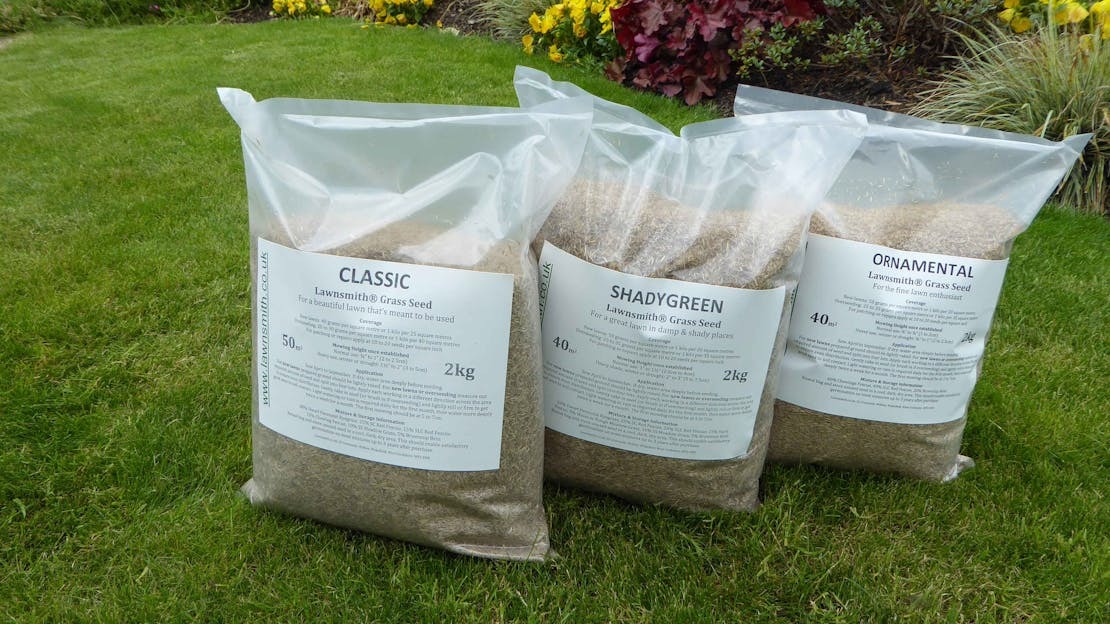
Slow Growing Grass for Lawns
For slow-growing grass varieties suitable for UK lawns, you can consider the following options, though there are considerable downsides!
Chewings Fescue
This fine-textured grass is known for its slow growth and tolerance to shade. It forms a dense, low-maintenance turf that requires minimal mowing.
Present in our Classic and Ornamental Grass Seed mixtures
Brown Top Bentgrass
Brown Top Bentgrass is a low-growing species that is often used on golf course greens. It has a slow growth rate and can tolerate close mowing.
Present in our Classic, Shadygreen and Ornamental Grass Seed mixtures
Slender Creeping Red Fescue
Slender Creeping Red Fescue is a slow-growing grass commonly used for lawns, especially in coastal areas. It has good salt tolerance and requires minimal maintenance.
Present in our Classic, Shadygreen and Ornamental Grass Seed mixtures
Sheep's Fescue
Sheep's Fescue is a slow-growing grass with fine, needle-like leaves. It forms a dense turf and thrives in dry, infertile soils. It requires less frequent mowing compared to other grass species.
Present in our Shadygreen Grass Seed mixture
When selecting grass for your specific location, consider factors such as soil type, sunlight exposure, and intended use of the lawn.
Drawbacks of Slow Growing Lawns
Because there are downsides to slow growing grass species we have blended them with other grass species to eliminate those downsides. This means you can have a great lawn using our mixtures and still benefit from a slightly slower growth. We are not claiming 'slow growth' and in most circumstances you should be mowing at least every 10 to 14 days. If you do venture away from our recommended mixtures into true slow growing species then expect some or all of the following:
Longer Establishment Period
Slow-growing grass species typically take longer to establish themselves compared to faster-growing varieties. This can result in a longer wait time for a newly seeded or turfed lawn to become fully established and lush.
Vulnerability to Weeds
A slow-growing lawn may provide more opportunities for weeds to invade and establish themselves. The slower growth of the grass can give weeds a competitive advantage, leading to an increased presence of weeds in the lawn.
Weed Grasses become very obvious
All lawns will have some weed grass content over time. Slow growing grasses are primarily fine bristle like leaves but weed grass leaves are usually coarse, wide and flat. This means they are very obvious as well as much taller than your desired grasses after just a week!
Reduced Recovery from Damage
Slow-growing grasses have a limited ability to recover from damage caused by factors such as foot traffic, pets, games, gatherings or extreme weather conditions. This means that it may take longer for the grass to repair itself and regain its appearance and functionality.
Limited Self-Repairing Abilities
Slow-growing grasses may have a slower ability to fill in bare patches or recover from thinning areas. This can result in a less resilient and visually appealing lawn, as it may take a significant amount of time and effort to address and repair these issues.
Increased Maintenance Requirements
While slow-growing grasses require less frequent mowing compared to fast-growing varieties, they may require more intensive maintenance in other areas. Slow-growing grasses may need additional over seeding, patch repair and weeding to maintain their health and appearance.
Increased Susceptibility to Disease
Grass that grows slowly may be more susceptible to certain diseases and fungal infections. The slower growth can weaken the grass and make it more vulnerable to pathogens, potentially leading to brown patches or other unsightly issues in the lawn.
It's worth noting that the drawbacks mentioned above may vary depending on the specific grass species and the environmental conditions in different regions of the UK. Additionally, some homeowners may prefer slow-growing grasses due to their reduced maintenance requirements, so it ultimately comes down to personal preferences and priorities.
The Wise Choice
To get the best of both worlds, slower growth with a great looking lawn choose one of the mixtures below. Then:
- Mow regularly but on a higher than normal setting. This reduces growth.
- Feed seasonally with a pelleted or granular slow release fertiliser such as those in our shop. Slow release fertilisers don't cause much initial surge growth so less mowing.
- Feed on the lower end of the recommended rates